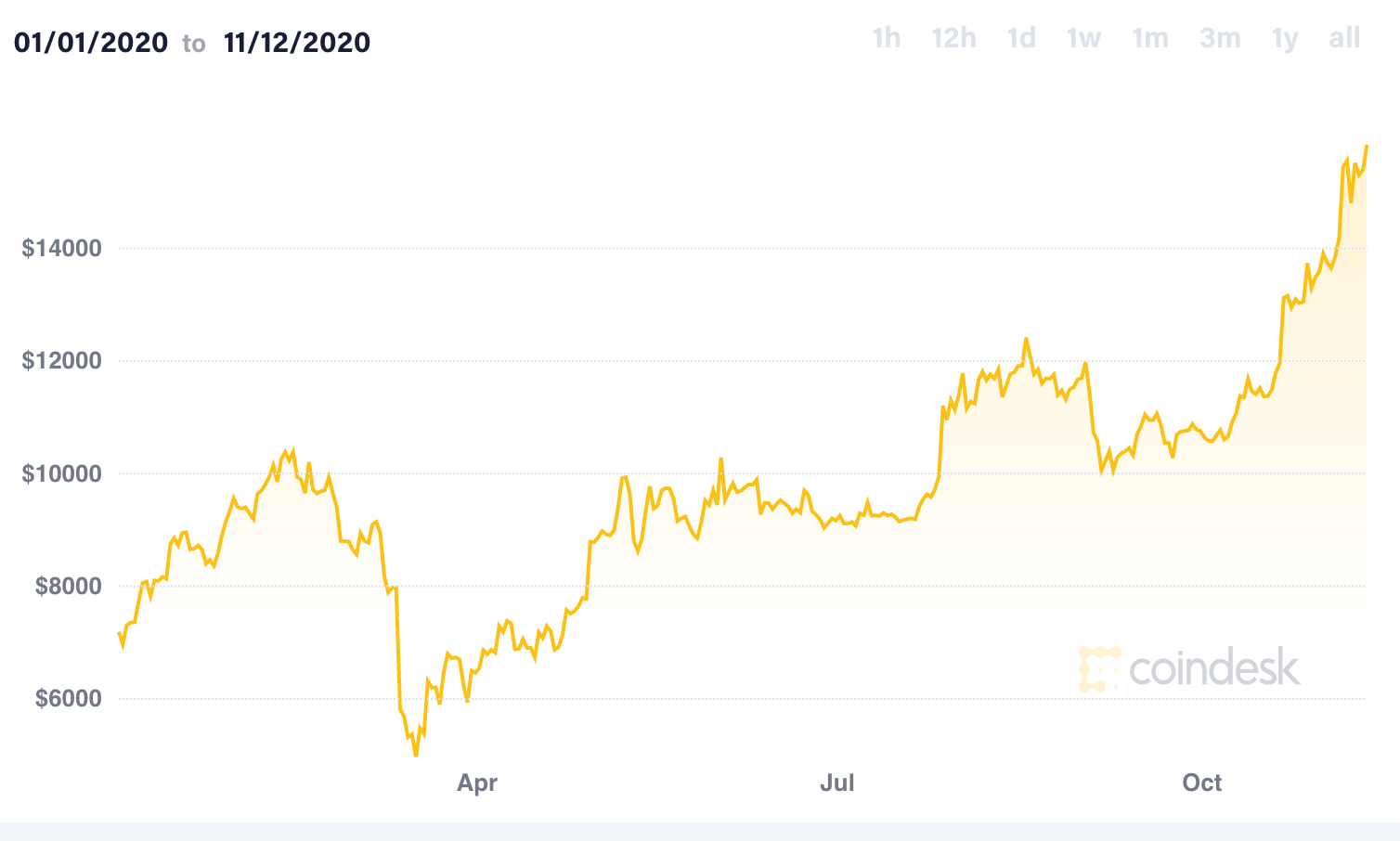The following is a contributed article from a content partner of Benzinga
Source: Stock Charts Dow Jones Industrial Average
On January 1, 2020, the Dow Jones Industrial Average exploded into the New Year at a level of 28,583.68, only to spectacularly plunge to 20,704.91 by March 18, 2020. Likewise, the NASDAQ started the year at 9,068.58, and dropped to 7,334.78. What has transpired since can best be described as an epic recovery, given the circumstances. The US economy has led the way, wrenching industrials, financials, tech, energy, real estate, materials, and communications et al out of the quagmire.
Source: Statista Weekly Development of the NASDAQ Composite Index (January 2020 – November 2020)
Thanks to an unprecedented series of quarters, the stock maarket has rebounded with truly outsized returns. The surprising performance of US financial markets flies in the face of conventional wisdom, particularly at a time when a global contraction is taking place. Oil demand is perceived by many as a barometer of global productivity. OPEC (Organization of Petroleum Exporting Countries) has seen member nations dramatically cut production, for a revised figure of 90.2 million bpd in 2020.
Forecasting ahead, OPEC anticipates persistent weak demand across Asia for the first half of 2021. Year-on-year OPEC's productivity reflects a 9.5 million bpd reduction. Given that crude oil is the predominant energy source fuelling production, manufacturing, and transport, the performance of US markets is remarkable. If OPEC's analysis proves correct, overall global oil demand will increase by 6.6 million bpd in 2021, far lower than initial estimates.
The net effect of Covid-19 has set the world economy back, caused irreparable pain and suffering, and initiated a recession that is likely to persist for some time. It is against this broad backdrop that traders, investors, portfolio managers, and financial analysts ponder the possibilities in the markets. For much of the year, the focus has shifted away from travel, tourism, and entertainment. Many sectors of the economy have been blackballed by traders and investors, including cruise lines, airlines, restaurants, hotels, and in-person retail and entertainment experiences.
A result of the uneven rebound is that lternative investments are once again coming into sharp focus, led chiefly by a return to gold bullion, gold stocks, gold ETFs, and gold futures. It comes as no surprise that gold gains favor from a downturn in global economic performance. Traders and investors seeking a hedge against the uncertainty and volatility of the financial markets turn to gold when stocks sour. As the aforementioned chart reflects, the price of gold started 2020 at $1,527.10 per ounce, and it is currently trading at $1,860.95, heading into the final stretch. That represents an appreciation of $333.85 over 11 months, or 21.86% for the year-to-date.
Source: CoinDesk Bitcoin (BTC) Year to Date Performance
Indeed, popular ETFs such as SPDR has a year-to-date return of 22.94%, much in line with the
performance of gold bullion. SPDR Gold shares (GLD) are currently trading around $176.31 each, for a 1-year daily total return of 27.80%, and a 3-year daily total return of 13.07%. Unsurprisingly, other contrarian options are proving to be popular all over again. Bitcoin (BTC) the world's premier cryptocurrency is rapidly inching towards its multi-year high levels. For the year-to-date, Bitcoin is up 123.08%. It started at $7,174.74 per unit BTC and is currently trading at $16,005.98 per unit BTC. that represents an $8,831.24 appreciation in 11 months. While certainly impressive, Bitcoin and gold remain largely out of reach of everyday investors who have fallen on hard times.
Another oft neglected sector of the economy, and one which typically trades OTC is penny stocks. An explosion of interest into low-cost stocks trading has taken place this year, fuelled largely by an influx of biopharmaceutical companies seeking to make their mark on the world amid the pandemic. As expected, there are good penny stocks and bad penny stocks. The penny stocks worth watching are those with growth potential where the companies in question are offering products/services that have real value propositions for the markets.
The litmus test of the viability of a penny stock is evident in the level of interest that is drummed up in these companies among investors, traders, and industry aficionados. Credibility is paramount. Picking a reputable penny stock can prove valuable if traders and investors get in on the ground floor, and ride the elevator all the way up. The volatility of the stocks is the main reason for their explosive growth potential. A caveat is in order however: Penny stocks are known to move dramatically from one hour to the next, particularly when there is a large volume of trading, take-profit orders, and buying on the dip taking place. Several penny stocks that have made the news in November include Digital Ally Incorporated (DGLY), Bantec Inc (BANT), miRagen Therapeutics Inc (MGEN), FindIt Inc (FDIT), and Universal Security Instruments Inc (UUU). Naturally, due diligence is absolutely essential when investing in penny stocks, given their explosive price movements.
© 2024 Benzinga.com. Benzinga does not provide investment advice. All rights reserved.
Comments
Trade confidently with insights and alerts from analyst ratings, free reports and breaking news that affects the stocks you care about.


